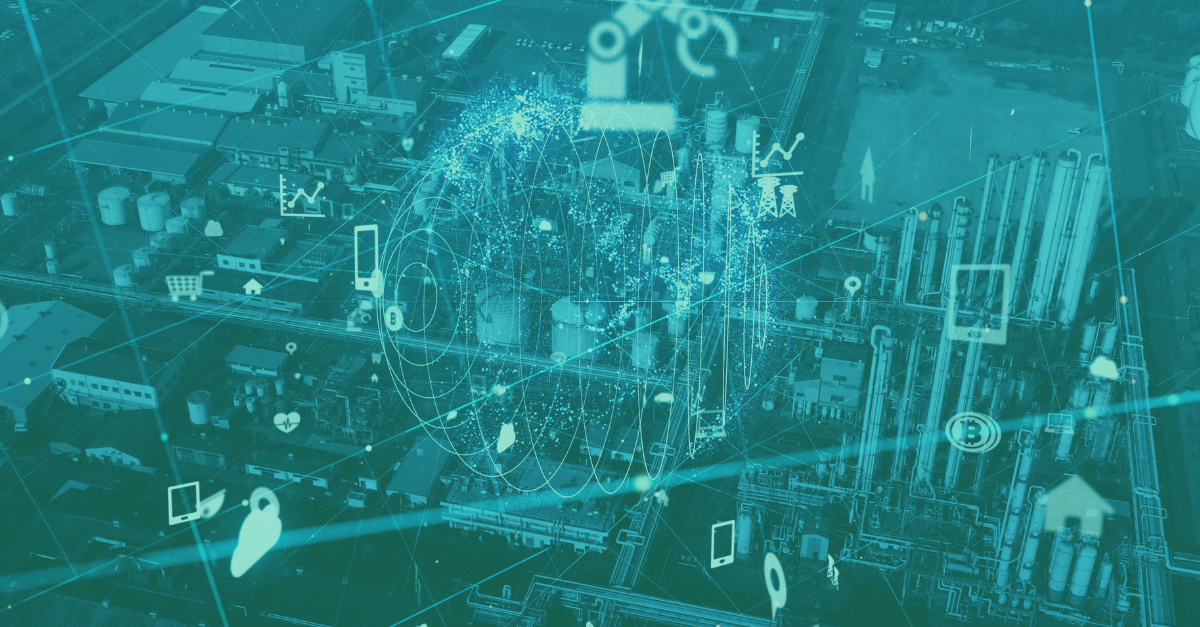Asset tracking, a facet of enterprise operations once limited to basic location monitoring, has experienced a transformative evolution. Today, it is a technological marvel that provides real-time data on various physical assets’ parameters, from vehicles and equipment to personnel. This expansive dive will spotlight the emerging trends and innovative solutions shaping asset tracking’s future trajectory.
Asset Tracking: The Art and Science of Monitoring Assets
Essentially, asset tracking is the technology-aided process of monitoring and managing physical assets. Advanced tech solutions offer an in-depth view of asset location, status, and other relevant information, serving as an indispensable tool across the business spectrum. By enhancing operations, bolstering safety, and ensuring regulatory compliance, asset tracking is rapidly transitioning from a luxury to a necessity.
Asset tracking is no longer confined to vehicle management. It has become an integral component across various industry sectors, including manufacturing, supply chain management, healthcare, and more, providing actionable insights into a diverse range of assets from high-value products to specialized equipment.
The Evolution and Revolution of Asset Tracking Systems
As technology gallops forward, asset tracking systems are keeping pace, integrating newer features and functionalities. The journey from rudimentary GPS-based tracking to sophisticated, IoT, and cloud-driven data solutions has significantly expanded the realm of asset tracking. These emerging trends are changing the way businesses manage their assets and are setting the stage for future possibilities.
IoT: The Game Changer in Asset Tracking
The advent of IoT has heralded a new era in asset tracking. Equipped with smart, interconnected sensors, IoT solutions offer an unprecedented level of transparency into asset status. These wireless devices, attached to assets, collect and relay data about location, temperature, humidity, vibration, and much more.
For instance, within a fleet management context, IoT sensors can efficiently streamline delivery routes, improve fuel efficiency, and reduce accident rates, effectively leading to substantial cost and resource savings. Meanwhile, in a temperature-sensitive environment like a food storage warehouse, IoT sensors can maintain optimal temperature and humidity levels, preventing costly spoilage and waste.
However, the implementation of IoT-based solutions isn’t without challenges. The high initial cost of these sensors may prove prohibitive for some businesses. Additionally, the increased connectivity presents heightened risks of cyber threats, necessitating robust security measures for IoT solutions.
GPS Asset Tracking: The Reliable Sentinel
Even with the wave of new tracking technologies, GPS-based asset tracking remains a trusted pillar in the industry. GPS trackers utilize satellite signals to provide precise location data of assets, making them an invaluable tool for many businesses.
These trackers have found wide-ranging applications, from tracking fleet trucks, locating heavy machinery in expansive construction sites, or tracing the movement of valuable goods across countries. Yet, GPS trackers do have their limitations. Tracking in areas with weak GPS reception or indoor environments can be challenging.
Real-Time Asset Tracking: Instantaneous Data, Informed Decisions
Emerging as a crucial trend in recent times is real-time asset tracking, offering businesses immediate data on their assets’ location and status. Access to such instantaneous data allows businesses to make immediate, informed decisions, leading to more agile and efficient operations.
Real-time tracking finds wide acceptance across diverse sectors. Within a fleet, it provides live data on vehicles’ whereabouts, allowing for prompt route adjustments. In a manufacturing setup, it can alert the management about equipment malfunctions, thereby reducing downtime and maintaining productivity. Despite its higher implementation costs and potential data management challenges, the demand for real-time tracking solutions continues to surge.
Cloud-Based Asset Tracking: Simplifying Data Management
Cloud-based asset tracking is another pivotal trend shaping the future of asset tracking. Harnessing the power of the cloud, these solutions allow easy access to data from anywhere, significantly facilitating data sharing among stakeholders.
Cloud-based solutions are proving to be a game-changer for businesses dealing with a large number of assets or requiring extensive data sharing. However, as more data shifts to the cloud, the focus on data security becomes paramount. Organizations must adopt rigorous measures to protect their data and ensure its integrity.
Geofencing: The Invisible Protective Barrier
The incorporation of geofencing technology in asset tracking is a rapidly emerging trend. Geofencing allows businesses to create virtual boundaries around assets, triggering alerts when assets enter or leave these predefined areas. This technology enhances asset security, allowing businesses to control asset movement and prevent unauthorized access.
Geofencing proves particularly beneficial for fleet management by deterring unauthorized vehicle use or deviations from planned routes. Likewise, it aids in securing warehouses or restricted areas by sending alerts for any unauthorized entries or exits. The successful implementation of geofencing requires a robust technological infrastructure and meticulous planning.

Predicting the Future of Asset Tracking
As we gaze into the future of asset tracking, we’re faced with the exhilarating prospect of substantial technological evolution. Asset tracking, like many other sectors, is bracing itself for tremendous transformations as it converges with other monumental trends such as automation and the Fourth Industrial Revolution, or Industry 4.0.
Industry 4.0 encompasses the current trend of automation and data exchange in manufacturing technologies. This includes the Internet of Things (IoT), cyber-physical systems, cloud computing, and cognitive computing, all contributing to creating what’s often referred to as a “smart factory.”
In this digital transformation era, asset tracking systems must not only keep up but also push the envelope to provide even more nuanced, efficient, and data-rich solutions. Several technologies stand out in this future scenario: IoT, 5G, and edge computing.
IoT: The Cornerstone of Future Asset Tracking
The Internet of Things (IoT) will undoubtedly continue to be the cornerstone of next-generation asset tracking. As IoT technology becomes more refined, we can expect sensors to become smaller, cheaper, and more energy-efficient. This would mean they can be attached to more types of assets, even those previously considered unsuitable for sensor attachment due to size or power constraints.
Moreover, future IoT solutions for asset tracking will likely involve greater integration with other systems and processes. For example, data from IoT sensors might feed directly into enterprise resource planning (ERP) systems, making for a seamless flow of information that drives smarter, data-driven decisions across a business.
5G: Supercharging Asset Tracking
The rollout of 5G technology, the fifth generation of cellular network technology, is set to supercharge asset tracking capabilities. The increased speed and reduced latency of 5G networks mean that data can be transmitted from assets to tracking systems almost instantaneously, significantly improving the functionality of real-time tracking solutions.
This could revolutionize industries that rely on immediate information for their operations, like autonomous vehicle fleets where instantaneous data transmission could make the difference between smooth operation and a traffic incident. Furthermore, the ability of 5G networks to support a massive number of devices per square kilometer could enable highly granular, dense asset tracking in areas like smart cities or large industrial complexes.
Edge Computing: A Paradigm Shift in Data Processing
Edge computing is another promising technology set to influence the future of asset tracking. By processing data closer to where it’s generated (at the “edge” of the network), edge computing reduces the need to transmit data long distances to a central location for processing.
For asset tracking, this could mean quicker, more efficient data processing, particularly for assets generating large volumes of data. For instance, in a large warehouse, sensors on every item of stock could generate a vast amount of data, potentially overloading a centralized processing system. Edge computing could process this data on-site, relieving strain on central servers and enabling faster, more responsive tracking.
An Exciting Road Ahead
The future of asset tracking is one paved with innovation and enhanced capabilities. The marriage of IoT, 5G, and edge computing technologies promise a new generation of asset tracking systems, defined by seamless connectivity, high-speed data transfer, and real-time processing.
But these technologies are not the final destination. As we continue to push the boundaries of what’s possible, we can anticipate further advancements like the incorporation of artificial intelligence (AI) for predictive maintenance, use of blockchain for increased security and transparency, and the integration of augmented reality (AR) to visualize asset tracking data in real-time.
In this ever-evolving landscape, businesses must remain agile, ready to adapt and harness these powerful tools to drive efficiency, cost-effectiveness, and data-driven decision-making in their asset tracking strategies. The future holds untold possibilities, and it’s an exciting time to be part of this journey.
The dynamic landscape of asset tracking, marked by constant technological advancements, necessitates businesses to stay updated on emerging trends. These mature and evolving technologies will continue to shape and redefine the methodologies of tracking and managing assets.
Reach out to HoloTrak today for expert advice or customized solutions. We are committed to helping you navigate the future of asset tracking.

